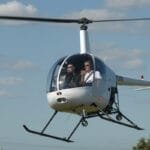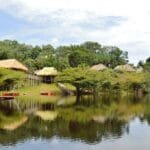
MUSA & INPA Natural Museums of Amazon

Created in 1952 and implemented in 1954 – the National Institute of Amazonian Research (INPA) – over the years, it has been conducting scientific studies of the physical environment and living conditions of the Amazon region to promote human well-being and socio-economic development regional economy. Currently, INPA is a world reference in Tropical Biology.
The first years of INPA were characterized by surveys, surveys and inventories of fauna and flora. Today, the challenge is to sustainably expand the use of natural resources in the Amazon.
In order to meet the challenge, the Institute has the general coordination of Training, Administration, Strategic Actions, Extension and four Research Coordination working in the following areas: Environmental Dynamics, Society, Environment and Health; Technology and Innovation and Biodiversity.

INPA has several collections with a large number of specimens and specimens of the fauna and flora of the Amazon region, made up of several collections, which were gathered over more than 50 years of inventories and research developed by INPA in the Amazon. The INPA herbarium has the largest collection of plants in the Amazon and is the fifth largest Brazilian herbarium. It has more than 237 thousand registered copies, a collection of more than 25,000 phototypes, in addition to associated collections: Carpoteca, with about 2,500 fruits and Xiloteca, represented by 10,445 samples of wood. This collection is being digitized, and more than 450 thousand images are already available online, with their respective data.
Inaugurated on April 1, 1995 by President Fernando Henrique Cardoso, as part of the commemorations of the 40th anniversary of the National Institute of Amazonian Research (INPA), the Forest of Science was founded with the objective of opening the doors of the Institute to the public.

The Forest was designed and structured to foster and promote the development of INPA’s Scientific Dissemination and Environmental Education program, while maintaining the physical integrity of the area, preserving the flora and fauna aspects of the area.
The forest has an area of approximately 130 thousand meters, and to make its route more dynamic, the trails of access to the attractions that make up the place were created, enabling the visitor to obtain more information regarding the fauna, flora and the existing Amazonian ecosystems. To facilitate the visits, the Forest of Science has the support of the Small Guides Project, where young people work in the Forest from Tuesday to Friday making monitored visits.
The Natural Exposition is located at Av. Otávio Cabral, Petrópolis, south-central zone of Manaus. Visitation is from Tuesday to Friday from 9am to 12pm and from 2pm to 4pm. On Saturdays, Sundays and holidays the visits can be made from 9am to 4pm.













Site Desenvolvido por: 🚀 Agência Digital HGX Criação de Sites e Marketing Digital Criação de Sites e Marketing Digital
Obrigado pelo seu contato, retornaremos em breve! Thank you for contacting us, we will get back to you shortly!
Inscreva-se na minha newsletter para ver novas fotos, dicas e postagens do blog.